FALLEN ANGELS, DIR. WONG KAR WAI (1995)
Yue Man Square, Kwun Tong, Hong Kong
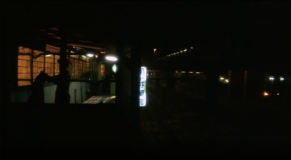
Wong Chi Ming comes back to his living place in Yue Man Square. Scenes from the Jet Tone’s Fallen Angels 1995, directed by Wong Kar Wai.
Fallen Angels (1995), the fifth film directed by Wong Kar Wai, is usually regarded as the supplement and extension of Chungking Express.1 It tells two separate stories about romance detachment. Yue Man Square was the centre space of the first story. A disillusioned hitman living here decides to quit the job, unaware of the obsession from his partner, a killer agent who often cleans his room in secret and deduces his recent activities from rubbish. The narrow and caliginous living space and the galloping tram outside captured from different angles signifies the coexistence and conflict of traditional and modern. Silence with noise, stillness with high speed, and convention with change reveal characters’ contradictory physical and emotional situations.
The film opens with an ultra-wide-angle shot of the empty and depressing Sai Wan Ho railway station, which is bright and crowded in daily life. It follows the killer’s partner walking into the protagonist’s room in Yue Man Square. From 2007, the Hong Kong government carried out the most significant urban renewal project about Yue Man Square. A sign of traditional city life has given its way to an updated urban living style, though the long building complex between Yue Man Square and Kwun Tong Road for Fallen angels remains. Contrary to what is presented in the film, this place in contemporary reality is nothing more than a decayed building, stagnant and charmless. In this film, Wong intentionally removes details of sites, creating a blurred vision and floating sense. Growing out of darkness, the building and railway are like birds with no legs described in Days of Being Wild.2 One is floating while the other keeps flying, indicating the paradoxical development of urban infrastructure.
Clock, mirror and lattice window visualize the protagonist’s dilemma. The still clock tells the immutable life of a hitman, and the cracked mirrors reflect the unwilling yet inevitable introspection. Additionally, the lattice windows, which are divided into different grids by straight and arching lines, strengthen the sense of restraint, limitedness, signifying that the killer can never make a choice to earn his living. Out of the window, trams on the railway, representing the reality, flash with time, from darkness to darkness. The carriage-like room with slightly shaking frames is like another tram, carrying a lonely soul to void. In 1995, upon the return of Hong Kong, the dilemma and identity confusion of the protagonist with his partner were more or less similar to Hong Kong. The simultaneity and divergence between convention and development, captured the unpredictable and dazed situation of Hong Kong, turn out to emerge from the everyday elements, including the classical dusty, messy, dim and ruined building and bright, high-tech, energetic and restless flyover. While Wong is generally regarded as a poet of time and romance, he is dedicated to capturing and presenting the authentic era, and thinking of the future simultaneously. The railway stands nowadays while the building of nostalgia and myth vanished with the killer, leaving a sigh intertwined with an aura of nihility.
— Yiming Liu, 3035637539
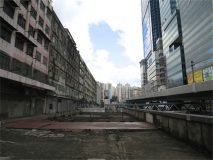
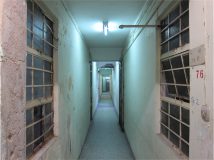
Modern view of Yue Man Square. Some of the ruined buildings are kept while modern skyscrapers take place of some traditional stores and lanes. Photos by Gary Wong, Elegy of Killers in Yue Man Square, January 19, 2017, https://film-pilgrimage.com/2017/01/19/.
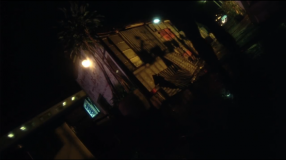
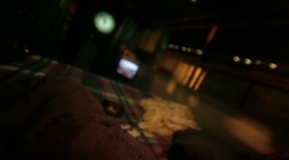
Left: Outer view of Yue Man Square in Kwun Tong, Hong Kong. Scenes from the Jet Tone’s Fallen Angels 1995, directed by Wong Kar Wai. Right: Inner view of the killer’s room, outside of which a travelling train flashes through the sky. Scenes from the Jet Tone’s Fallen Angels 1995, directed by Wong Kar Wai.
Notes:
1 Wong initially drafted this story as the third story of Chungking Express. It later developed into an independent film due to its length, conserving stylish elements of Chungking Express like themes, locations and photography.
2 Days of Being Wild is Wong’s first film as a director. It tells about a playboy seeking his father. He regards himself as a bird without legs, roving until death.
You raise an important point in your essay on the paradox of urban infrastructure, and I appreciate your attempt to describe the room in the building and the railway through this lens. This is certainly an idea to be developed. Given your ability for close reading, you may wish to consider extending this analytical framework into your video essay. I am also intrigued by your concluding sentence: “The railway stands nowadays while the building of nostalgia and myth vanished with the killer, leaving a sigh intertwined with an aura of nihility.” This reads as a reflection on Abbas’s notion of disappearance. What has reappeared in place of such vanishing spaces i.e. “rooms/buildings of nostalgia”?
Notes on your fieldwork: If you had conducted a field trip virtually, how have you “visited it” through other people (media reports, personal blogs, videos, etc.) who had done so? What other sources of materials, including ideas/concepts learnt from the coursework, did you refer to in this analytical writing?